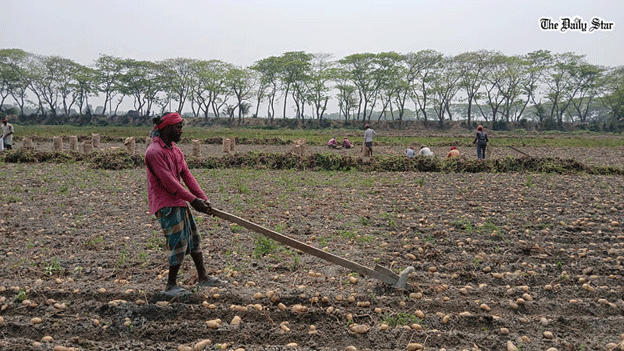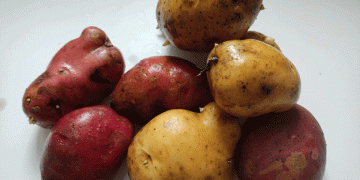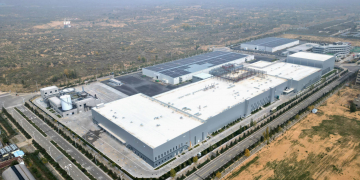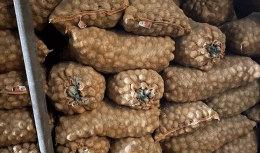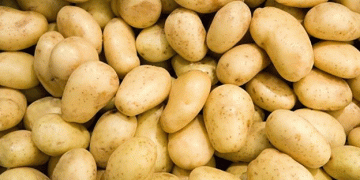Bangladesh is witnessing a dramatic surge in potato exports, with shipments reaching 24,000 tonnes by March 15 of the current fiscal year—nearly double the total exported during all of FY2024. The spike, however, is not a result of strategic market expansion alone, but a reaction to plunging domestic prices that have fallen below production costs, forcing farmers to sell cheaply.
In February alone, exports hit 12,000 tonnes, matching the total volume exported during the entire previous year. While this surge offers a much-needed outlet for excess supply, it also exposes systemic issues within Bangladesh’s potato value chain.
Production Glut and Farmer Losses
The root cause of the current crisis is a production glut. Potatoes were cultivated on a record 5.24 lakh hectares of land this fiscal year—a 15% year-on-year increase—largely in response to last November’s retail prices, which soared to Tk 80 per kilogram. Farmers, optimistic about similar returns, expanded cultivation significantly.
However, the market took a sharp turn. By February 2025, farm-gate prices fell to just Tk 11–15/kg, while production costs were estimated at Tk 15/kg, according to the Department of Agricultural Extension (DAE). In the northwest—the country’s main potato-producing region—farmers were forced to sell at a loss as storage options filled up quickly.
Exporters Seize Opportunity
The low domestic prices have opened doors for exporters. Hafizur Rahman Mintu reported exporting 9,000 tonnes this year to Nepal, Malaysia, and Singapore—an 80% increase over FY24. He was able to buy potatoes at Tk 10–20/kg, compared to Tk 30–40/kg last year.
Similarly, exporter Tawhidul Islam shipped 8,400 tonnes to Malaysia, Singapore, Nepal, and Bahrain, up from just 1,400 tonnes last year. One first-time exporter even sent 1,300 tonnes to Sri Lanka, highlighting the broadening reach of Bangladeshi potatoes.
Exporters are focusing on high-demand varieties like Granola, Diamond-7, and Majestic. However, the supply of export-quality potatoes remains limited. According to Md Afzal Hossain, acting deputy director of the DAE in Rangpur, the domestic market still lacks sufficient volume of premium-grade varieties.
Infrastructure and Variety Recommendations
Despite an expected 1.20 crore tonnes in total production this year (up from 1.06 crore tonnes last year), Bangladesh’s cold storage infrastructure remains inadequate, further worsening the price crash. The Bangladesh Cold Storage Association estimates that much of the harvest is still being sold prematurely due to lack of space.
In response, the DAE is advising farmers to shift toward export-oriented varieties such as Granola, Santana, and Kumari and improve post-harvest storage solutions. These changes would help balance domestic supply with export potential, stabilize prices, and minimize losses in future seasons.
Outlook and Policy Implications
Syed Md Rafiqul Amin, Managing Director of the Hortex Foundation, emphasized the role of export growth in providing relief to farmers. The foundation is now actively connecting farmers with buyers to streamline the supply chain.
Although farm-gate prices have begun to recover slightly, retail prices in urban areas like Dhaka remain stable at Tk 20–30/kg, according to Trading Corporation of Bangladesh data. This disconnect highlights inefficiencies in the marketing and distribution system.
Bangladesh has been exporting potatoes since 1999, according to the FAO, but until recently, volumes remained limited. Over the past nine years, average exports hovered around 50,000 tonnes annually. If current trends continue, FY2025 could significantly exceed that benchmark—but sustainable growth will require structural changes.
Bangladesh’s potato export boom highlights both the strength and fragility of its agricultural system. While foreign markets offer a valuable release valve for overproduction, long-term resilience depends on better planning, storage infrastructure, and strategic crop selection. Export success must be built not just on market opportunity, but on systemic support for the farmers who feed the world.
